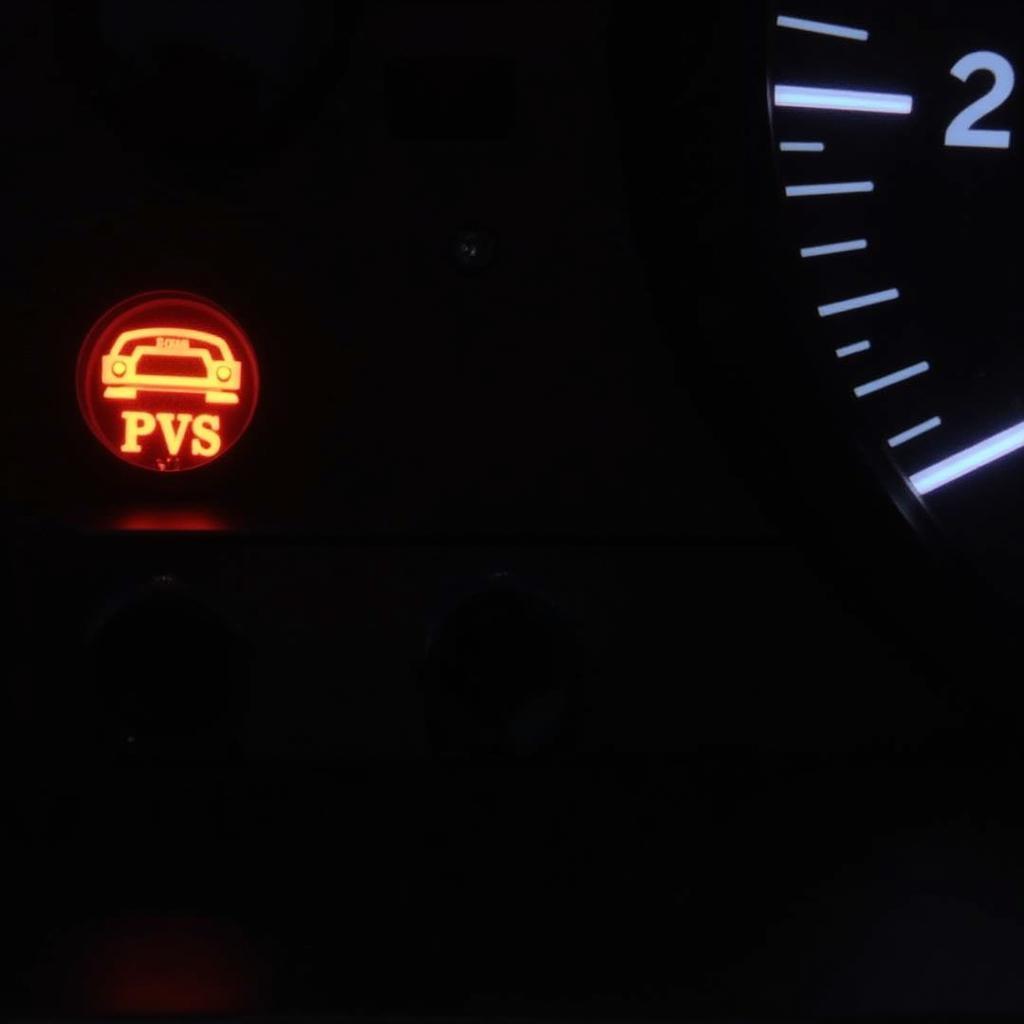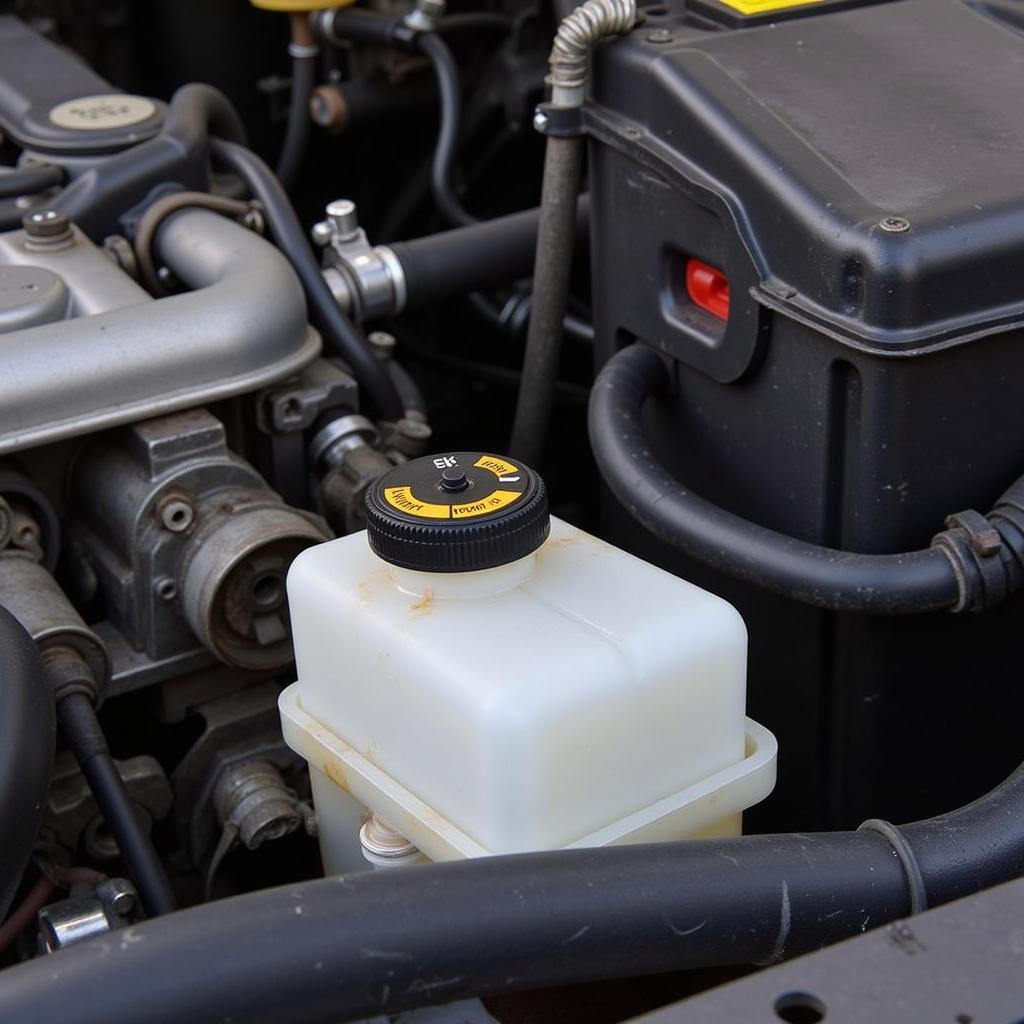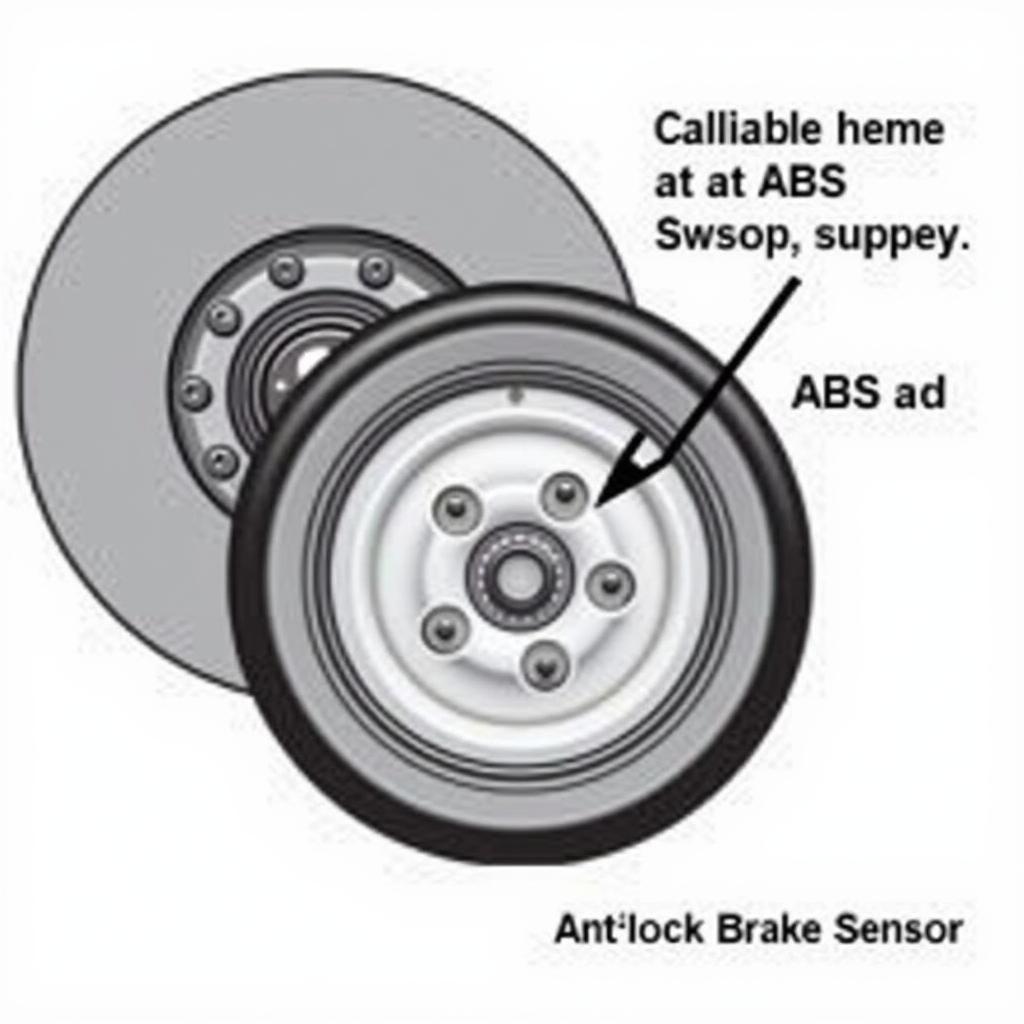A glowing brake warning light on your 2000 Lexus RX300 dashboard is a clear signal that something needs attention. While it can be a simple fix, ignoring it could lead to serious safety risks. This article dives into the common culprits behind a 2000 Lexus RX300 brake warning light and provides insights into how to address them.
 Lexus RX300 Dashboard with Brake Warning Light Illuminated
Lexus RX300 Dashboard with Brake Warning Light Illuminated
Common Causes of a 2000 Lexus RX300 Brake Warning Light
1. Low Brake Fluid Level
One of the most common reasons your brake warning light turns on is low brake fluid. Brake fluid is the lifeblood of your RX300’s braking system, transmitting the force from your foot on the pedal to the brake calipers. Over time, brake pads wear down, which might give the impression of leaking brake fluid, even when no leak is present.
What to do:
- Check the brake fluid level: Locate the brake fluid reservoir under the hood. The reservoir will have a “Minimum” and “Maximum” marking.
- Add brake fluid if needed: If the level is low, carefully add the correct type of brake fluid, as recommended in your owner’s manual, to the “Maximum” line.
- Inspect for leaks: While adding fluid, carefully examine the area around the reservoir and underneath the vehicle for any signs of leaks. A leak in the brake system requires immediate professional attention.
 Brake Fluid Reservoir in a 2000 Lexus RX300
Brake Fluid Reservoir in a 2000 Lexus RX300
2. Worn Brake Pads
Brake pads are designed to wear down over time. When they get too thin, the brake warning light might illuminate.
What to do:
- Inspect brake pads: If you’re comfortable with basic car maintenance, you can check the brake pads yourself. Look through the spaces between the wheel spokes for the brake pads. They’ll be located on either side of the rotor (the shiny, metallic disc).
- Replace worn brake pads: If the brake pads are worn down close to the metal backing plate, it’s time to replace them. Consider replacing all four brake pads at the same time for even braking performance.
3. Faulty Brake Light Switch
The brake light switch is a small sensor located behind the brake pedal. It signals the brake lights to turn on when the pedal is pressed. A malfunctioning brake light switch can sometimes trigger the brake warning light.
What to do:
Diagnosing a faulty brake light switch often requires some mechanical expertise. If you suspect this is the issue, it’s recommended to consult with a qualified mechanic or take your RX300 to a trusted repair shop.
4. ABS Issues
The Anti-lock Braking System (ABS) prevents your wheels from locking up during hard braking, helping you maintain steering control. A problem with the ABS system, such as a faulty sensor or a malfunctioning ABS module, can trigger the brake warning light.
What to do:
Diagnosing ABS issues typically requires specialized equipment. It’s best to take your 2000 Lexus RX300 to a qualified mechanic or a trusted repair shop equipped to diagnose and address ABS problems.
 ABS Sensor Location on a 2000 Lexus RX300
ABS Sensor Location on a 2000 Lexus RX300
Remote Diagnostics and Solutions
In today’s technologically advanced world, remote diagnostics and software solutions are becoming increasingly prevalent in the automotive industry. For certain issues related to your 2000 Lexus RX300’s brake warning light, remote assistance might be an option. Some advanced diagnostic tools can interface with your vehicle remotely to read error codes and provide insights into potential problems.
“Remote diagnostics can be a valuable tool for identifying the root cause of a brake warning light, especially if it’s related to software or electronic components,” says Sarah Thompson, a seasoned automotive electrical engineer specializing in remote diagnostics. “However, it’s important to note that not all issues can be resolved remotely. Physical repairs or component replacements will still require hands-on attention.”
Conclusion
Addressing a brake warning light in your 2000 Lexus RX300 should be a top priority. By understanding the common causes and potential solutions, you can take the necessary steps to ensure your safety and the optimal performance of your vehicle. If you’re unsure about any aspect of diagnosing or repairing your brake system, don’t hesitate to seek help from a qualified mechanic or a reputable repair shop.
